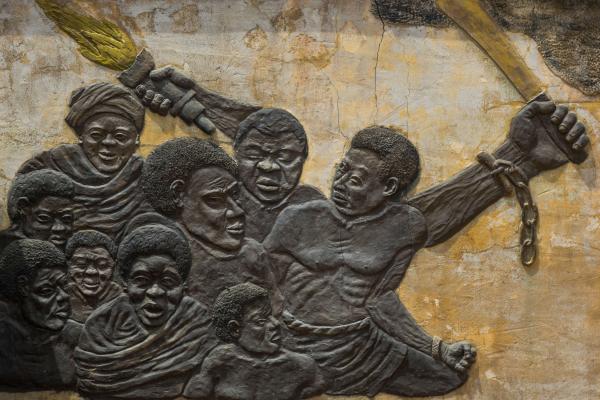Teaching kids about justice issues can be daunting: How can parents present age-appropriate concerns and encourage positive action? Studies from the Center for the Study of Social Policy show that children exposed to civic issues at a younger age are more likely to vote and participate in other types of political engagement as adults.
On Thursday, Mom’s Clean Air Force hosted “Play-In” for Climate Justice to create an atmosphere for parents and children to play, learn, and hear about how climate change, air pollution, and other environmental issues affect their lives.
Sojourners talked to parents at the event about how to talk to kids about activism, climate change, and the importance of taking care of the planet.
Here are four ways parents talk to kids about the planet:
1. Help them understand they have a voice.
Elizabeth Brandt, a mom and a participant of the play-in, takes her young kids to her senators’ office. She believes this will lay a foundation for her children to speak up throughout their life.
“She [her 4-year- old daughter] may not have the most articulate things to say — last year when she was three she asked them not to throw trash in the ocean which our senators don’t do — but she’s learning that she has a voice in this process and that’s about the most important thing,” said Brandt.
2. Be a role model.
Kelle Pressley, a volunteer with Mom’s Clean Air Force and a mother of nine kids, came to the activism world through the death of her daughter. She died of an autoimmune disease and forced Pressley to have a conversation with her children about how the body works, what it needs, and how human beings’ relationship with climate affects health.
“We have not taken care of the Earth well enough; we have contaminated our food and our soil and our water and our daughter’s body responded negatively to that.”
Pressley is a community activist and lives her life as an example to her kids as well as other moms.
“Children watch and then they react; they follow what they see and if they see us say no toxins, fix our land, they’re going to follow suit.”
3. Make climate change issues a part of everyday activities and conversations.
Elizabeth Thorp, a mom of three, says it’s crucial to help kids understand how climate change affect their daily lives — especially for older kids and teenagers. For Thorp, it’s as simple as bringing up environmental issues in everyday life whether it’s by talking about climate issues on the news or being outside with the kids.
“When we go swimming at the beach, we talk about erosion of beaches; when we hear stories like the one about the iceberg the size of Delaware breaking off from the Antarctica, we make sure we talk about it,” said Thorp.
4. Make the idea of environment personal.
Shaun Dakin, the social media director for Mom’s Clean Air Force says that making environmental issues personal and about health makes it easier for kids and adults to understand the importance of taking care of the planet.
“I've heard someone say if you call your neighbor and say I’m concerned about climate change, the ice caps and polar bears dying, they’ll kind of care about that, but they’ll most likely hang up and say they have to go take care of their family."
Dakin went on to say that if a person asks about a neighbor’s asthma and talks about the role environment plays in the health of lungs, it is much easier for others to see the physical affects the climate and the earth can have in their lives.
Got something to say about what you're reading? We value your feedback!







